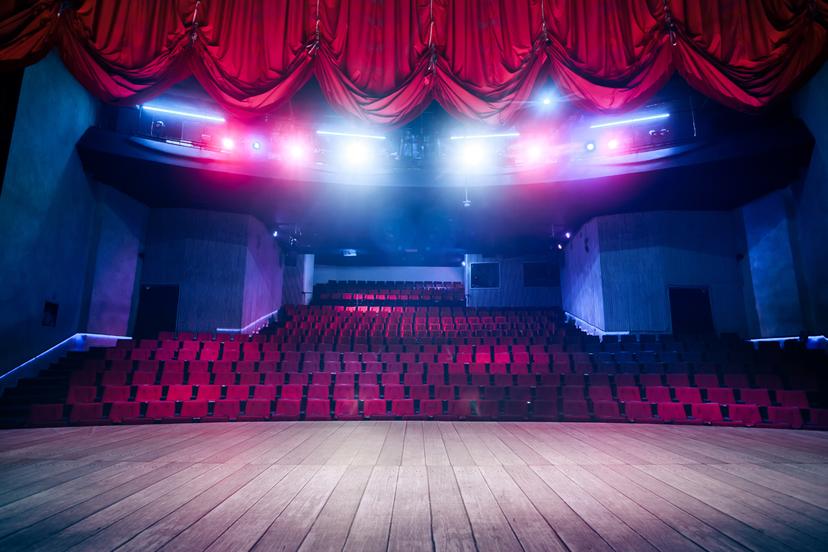Performing Arts

Background
The performing arts have origins in early civilizations. The Greeks were influential in art, dance, music, and theater. Poems written by poets such as Sophocles and Euripides were performed, sometimes with dancers, before live audiences in theaters and arenas in ancient Greece. The Greeks also developed a notation system for music. Researchers have theorized that early man created music and singing in an effort to imitate birds, animals, and other sounds of nature. Egyptians and other groups played harps in rituals honoring their gods. Other early instruments were drums and trumpets such as the shofar, which was a ram’s horn commonly used in Jewish temples and still used today.
In medieval times, the Roman Catholic Church provided formal music education to train boys to sing Gregorian chants, which were simple melodies with specific notes. The focus on creating music for multiple instruments began in the 1700s and 1800s. It was then that composers Johann Sebastian Bach, Georg Friedrich Handel, Antonio Vivaldi, Wolfgang Amadeus Mozart, Ludwig van Beethoven, among many others, created different harmonies and melodies through complex instrumental compositions. Other musical forms emerged during this time, such as the opera, which combined orchestral music with theater. By the 1800s, the orchestra had an established structure in which similar instruments were grouped into sections: strings, woodwind, brass, percussion.
The types of music that have developed since the 1900s include the blues, jazz, gospel, country, folk, rock and roll, hip hop, and more. Inventions like the phonograph, radio, television, the computer, and the Internet have increased awareness and knowledge of other cultures’ music and musicians. Music from around the world can now be heard through online streaming services such as iTunes, Spotify, Pandora, and others.
Dance dates back to early times, with ritual ceremonies performed by tribal societies to ask the spirits and gods for success with battles, hunts, or harvests. Dance took center stage in religious ceremonies and festivals for Egyptians, Israelites, and other groups. The Greeks and Romans also focused on dance in education and entertainment. Ballet, which was initially performed in royal courts, evolved by the 18th century to a professional art that was performed on public stages. Early famous choreographers and dancers included Auguste Vestris, Jean-Georges Noverre, and Franz Hilverding. The ballet La Fille mal gardée, choreographed by French ballet master Jean Dauberval, premiered in July 1789, and is still performed today.
Ballroom dancing started with the aristocracy, later spreading to public dance halls in the mid-1700s in London and then through Europe and America. In the early 20th century modern dance emerged, allowing for personal expression and freer movement than ballet. Modern dance originators were Isadora Duncan, Loie Fuller, Ruth St. Denis, and Ted Shawn. Contemporary modern dancers include Martha Graham, Doris Humphrey, Merce Cunningham, Alvin Ailey, Twyla Tharp, among many others. Musical theater and comedy continue to be popular forms of entertainment, featuring a variety of dance types, including modern, ballet, and jazz. The TV shows Dancing with the Stars and So You Think You Can Dance are also popular and raise the public's awareness of different dance styles and choreography.
Theater acting originated with the Greeks around 535 B.C. History has it that Thespis of Icaria was the first actor to appear on a stage, reading lines from poems and creating different characters through various masks and props. The word “thespian,” meaning actor or relating to drama and theater, derives from Thespis. Greek tragedies and comedies were performed in outdoor theaters for live audiences. In medieval times Christian churches created religious plays that were performed during church services to reenact various religious stories. Starting in the 16th century, actors performed plays for royal courts throughout Europe, including Italy, Spain, and England. The 1500s also saw the first appearance of theaters being built that were dedicated to stage performance, e.g., in London, many permanent, public playhouses were custom built, including Shakespeare’s Globe Theatre. Prior to this, performances were typically held in rustic settings, such as pubs and outdoor courtyards. William Shakespeare was an early founder of playwriting; he created many plays in the 1600s that continue to be performed for theater, television, and film audiences.
In the 1800s and early 1900s, melodrama and Romanticism influenced theater, which featured elaborate stage settings and scenery, extremely emotional acting, and plays that focused on such topics as nationalism or glorifying nature or the past. Vaudeville was a popular performing art in the United States, particularly in New York City, in the early 1900s, with a mix of performers who acted out plays, danced, sang, told jokes, and played instruments. In 1899, the first “Broadway” theater in New York City, Victoria Theater, was built on West 42nd Street. Well-known theater actors in the early to mid-1900s included Ethel Barrymore, Lionel Barrymore, John Barrymore—all relatives of Drew Barrymore; Helen Hayes, Laurence Olivier, Marlon Brando, Jessica Tandy, Henry Fonda, Lee J. Cobb, to name only a few.
Since the 1900s many acting schools have been created, as well as drama departments in academia. Examples of acting techniques and methods that are taught include Stanislavski’s System, a more naturalistic and disciplined technique, and Lee Strasberg’s method, which encourages actors to draw from their personal, emotional experiences when portraying characters. Actors who trained in the Strasberg method include Dustin Hoffman, Al Pacino, Ellen Burstyn, Scarlett Johansson, and Steve Buscemi. There’s also the Stella Adler method, in which an actor’s imagination as well as emotional recall is used. Robert DeNiro, Mark Ruffalo, and Benecio Del Toro, among many others, are Adler alumni.
